I recently finished restoring this classic French randonneur bicycle, a Mercier from the early 1950's. It's equipped with 650B wheels and a number of rare components only seen on French bicycles of the 1940's – 50's.
I acquired the bike from a French seller on eBay, and comprehensively restored it to the original drivetrain, while also making period-correct tweaks to the wheels, handlebars, and saddle to make it more comfortable to ride. Read on to learn all about it!
This is a close-up of the original configuration of the rear drive-side drop-out. The bike had a 70's-era Sachs Huret Eco derailleur mounted on it. Note the tab with two holes in it slightly forward of the dropout – that's the correct mounting point for a derailleur.
This type of derailleur is called a "chainstay mount" for obvious reasons, and can typically handle 3-4 speeds. Taking over from the more eccentric designs of the 1930's and 40's like the Cambio Corsa or Osgear, chainstay-mounted derailleurs were the most common type of derailleur until the mid-to-late 1950's, although still a minority when compared to the numbers of internally geared 2 and 3-speed hubs by Sturmey Archer and Sachs in the same period.
They were manufactured by a number of different companies, but the most popular were Simplex, Huret, and Cyclo. Their designs typically utilized either push-rod or pull-chain to move the derailleur cage horizontally across the gears.
The rear derailleur is a Simplex Route Leger, one of the most iconic designs of this style. It's partially obscured by the protector I installed over it, a neat art-nouveau-esque piece I found. Derailleur cage tension was achieved through an external spring that hooked from a mount on the chainstay near the bottom bracket to the top of the cage, which can be seen here:
In the photo above, you can also see the front derailleur, a Simplex Competition model with a rare extra-large cage that doubles as a chain guard. Sometimes referred to as a "suicide" derailleur, it's actually quite easy to use. The rider reaches down and gently pushes the rod inwards or outwards to change gear. The crankset is a no-name 50.4 style with 50 & 42-tooth chainrings. The pedals shown are Lyotard models, but I will be replacing them with rare Sanzax pedals soon.
The original wheelset was a set of rusty Rigida chrome rims laced to Maillard hubs, but I don't think they were original to the bike, since the rear hub was spaced to 120mm O.L.D. while the actual rear spacing of this bike was 114mm. I found a period-correct set of Liberia hubs, and laced them to brand new Velo-Orange "Diagonale" rims, and added a 4-speed Atom freewheel with 16/18/20/22 speeds. The tires are new Panaracer "Col De La Vie" 650B x 38mm.
Other cool parts of this bike are the Jeay brakes, a sort of early cantilever / centerpull design that was revisited thirty years later by SunTour with their "roller-cam" brakes. The saddle is an Ideale 92 "Daniel Rebour" model, with matching saddle clamp, and the pump is a vintage Solibloc.
The fenders and racks are original, with cool little tin boxes on the rear rack for tools. The front light looks to be JOS "radios" type, but I haven't yet had the chance to fix the generator and lighting.
Overall, the bike rides very smoothly and shifts gears well. I might put a set of upright bars on it soon, but otherwise I think it's finished for now. As an introduction to these mysterious and eccentric, but very beautiful breed of classic French bicycles, I think it was perfect. I'm hooked on them now, and already planning more restoration projects for the future.
Check out the gallery below:

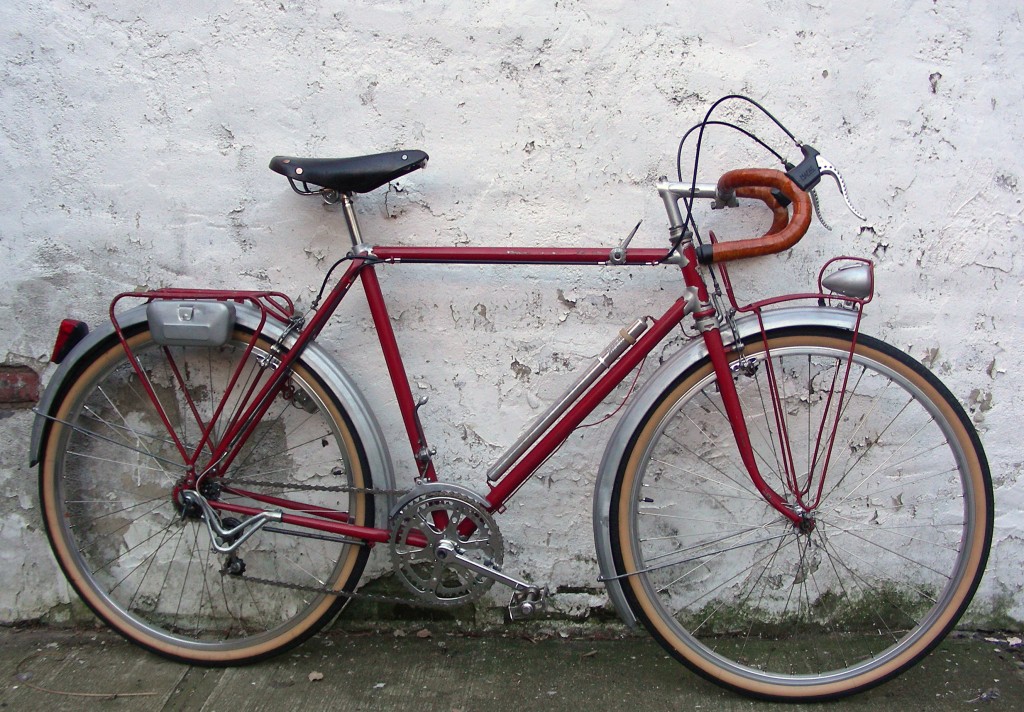
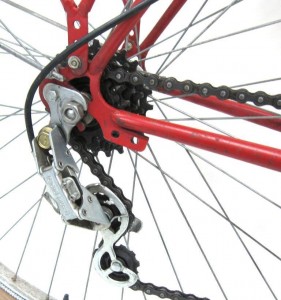

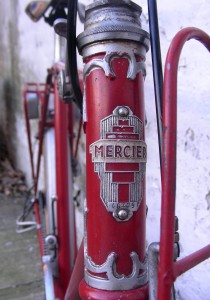
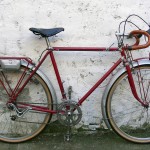
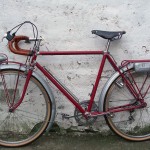
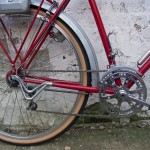
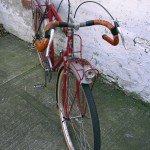
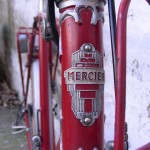
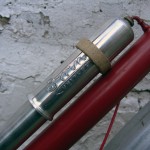
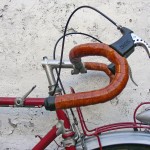
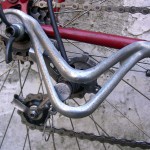
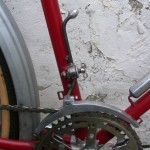
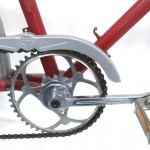
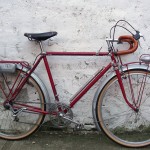
HELLO my name is Peter, is this bike available? if yes what is the asking price? I would like to see the bike in person. Please email.
Hi,
That's a fantastic bicycle you have and a very nice restoration… with one small caveat. That rear light doe's not do justice to everything else. It's a 70's-80's light that just doesn't belong on that bike. appropriate lights are quite easily found on ebay if you're interested.
Wow. Beautiful restoration! I also learned a lot and enjoyed your write-up. Thank you!
Hey Simon,
Good to see you last night at the Brooklyn Velodrome Vintage Wheelmen Christmas get together.
The bike shows really nice in person. Makes me feel like getting on my Peugeot PX-50 and meandonnuering around town.
Check out one of the member bikes – http://www.hetchins.org/coast.htm A new build frame by Johnny Coast in classic randonneur fashion.
Also Practical Cycles in the UK sells LED bulbs that screw into vintage bases. Neat little trick. They are a little brighter than the filament bulbs. I am not sure what the originial spec tail light was for that fender but the Mercier Randonneur shows up every now and then and you might see an original.
Love the metal boxes and derailleur guard. The fat 650Bs have a great proportion.
Good luck with the recent purchases, have to get those parts cleaners we were discussing.
Victor K.
Hi,
Diggin your blog!!!!
How well do the these brakes work? Stopping power, are they a pain to set up or keep adjusted etc? I have a 650b peugeot with mafac cantilevers that was brought into the US. They are simple and descent. I haven’t seen the brakes you have in person. Just curious what you think…
Thanks in advance for the info.!!!
Grant
The brakes work decently well – certainly not better than anything modern, but once they were tuned and equipped with modern pads, they give good solid braking power. The particular design of these brakes is similar to Dia-Compe “U-brakes”.
Pingback: Maruishi Emperor RE-C-A Touring Bike « djcatnap.com
Dusted the old girl off today and took her for a spin-what a wonderful bike-thank you
Hi Ford, I’m glad she’s still getting lots of love and usage! Thank you for the comment.